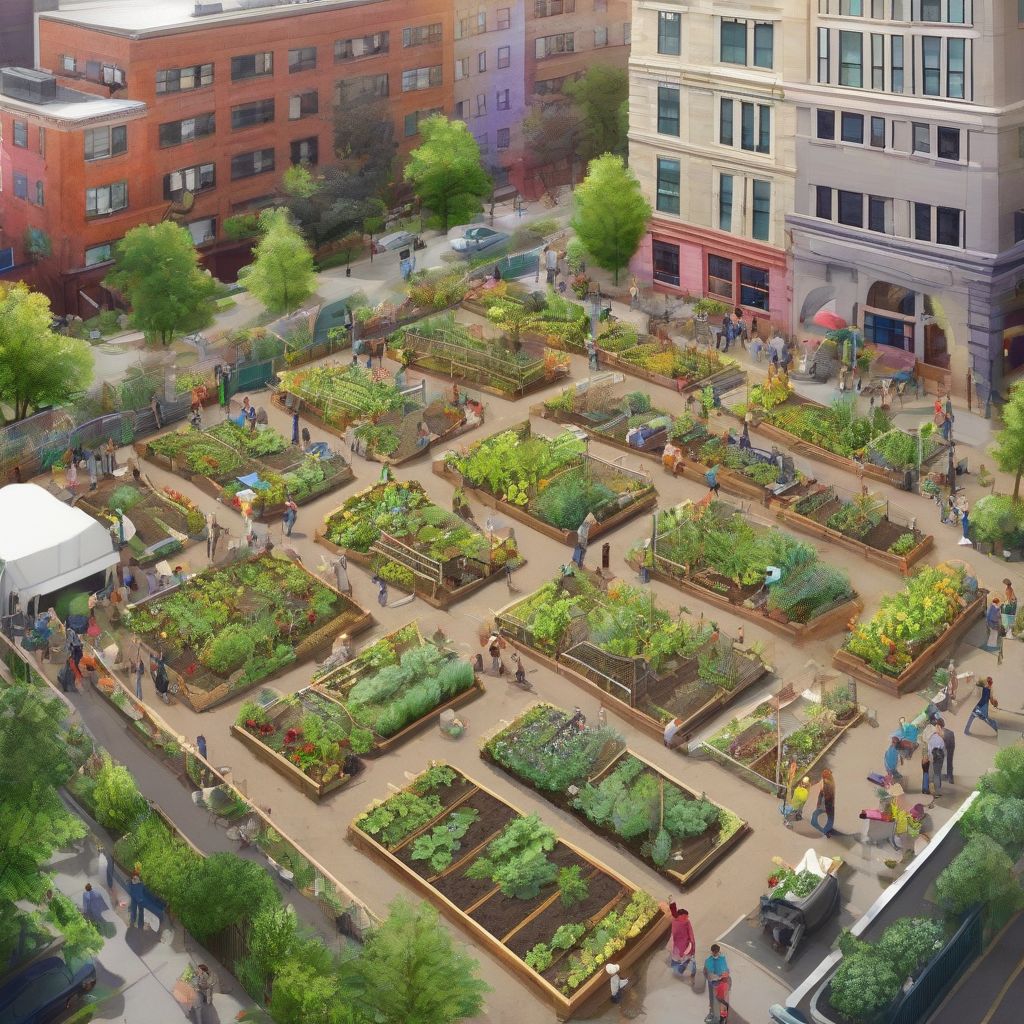Have you ever strolled through a concrete jungle and stumbled upon a vibrant oasis overflowing with fresh produce and buzzing with life? That, my friends, is the magic of a community garden in an urban setting. But their impact goes far beyond a splash of color in a grey landscape. These green spaces are quietly transforming our cities, fostering a sense of community and nourishing so much more than just our bodies.
Bringing People Together: The Social Impact
Community gardens are like magnets, drawing people in and fostering a sense of belonging. Imagine this: neighbors from all walks of life coming together, sharing knowledge, swapping stories, and lending a helping hand. These gardens become melting pots of culture and age, breaking down barriers and forging connections that might not have existed otherwise.
Here’s how community gardens cultivate social good:
- Building Community: Sharing a common goal, like tending a garden, naturally creates bonds between people. This shared responsibility cultivates a sense of community and belonging, especially in often-fragmented urban environments.
- Promoting Social Inclusion: Community gardens are welcoming spaces for people of all ages, backgrounds, and abilities. This inclusivity encourages interaction between diverse groups who might not otherwise interact.
- Reducing Social Isolation: For individuals who may be at risk of social isolation, particularly seniors or newcomers, community gardens provide a welcoming space to connect with others, share their skills, and build friendships.
A Growing Movement: Urban Gardening’s Rise
The trend of urban gardening has been steadily gaining momentum, and community gardens are leading the charge. This isn’t just a passing fad; it’s a response to a growing desire for:
- Sustainable Living: People are becoming increasingly aware of the environmental impact of their food choices. Growing your food locally reduces your carbon footprint and promotes sustainable practices.
- Access to Fresh Food: Food deserts, areas with limited access to affordable and nutritious food, are a serious issue in many cities. Community gardens can help bridge this gap by providing fresh, healthy produce directly to residents.
- Reconnecting with Nature: In our technology-driven world, community gardens offer a much-needed opportunity to reconnect with nature, get our hands dirty, and find peace in nurturing living things.
 Community Garden in Urban Setting
Community Garden in Urban Setting
[amazon bestseller=”urban gardening”]
Beyond the Salad Bowl: Environmental and Economic Benefits
While the social impact of community gardens is significant, the benefits extend far beyond building relationships. These green spaces are also making a tangible difference in our environment and local economies.
Environmental Benefits:
- Urban Heat Island Effect: Concrete and asphalt absorb and radiate heat, making cities significantly hotter than surrounding areas. Community gardens help combat this “urban heat island” effect by providing shade and releasing moisture into the air.
- Improved Air Quality: Plants act as natural air purifiers, absorbing pollutants and releasing oxygen. In urban areas with often-poor air quality, community gardens play a role in creating healthier environments.
- Stormwater Management: Green spaces, like community gardens, help absorb rainwater and reduce runoff, which can carry pollutants into waterways. This helps to prevent flooding and protects water quality.
Economic Benefits:
- Local Food Systems: Community gardens contribute to the development of local food systems by providing a source of fresh produce. This can create economic opportunities for gardeners to sell their surplus at local markets or to restaurants.
- Increased Property Values: Studies have shown that properties located near green spaces, including community gardens, tend to have higher property values.
- Community Revitalization: Community gardens can be a catalyst for neighborhood revitalization. They transform vacant lots into vibrant spaces, attract positive activity, and instill a sense of pride in the community.
Cultivating a Greener Future: The Potential of Community Gardens
As we look towards the future, the role of community gardens in urban environments becomes even more critical. They offer a tangible solution to many challenges facing our cities, from social isolation to environmental degradation.
Here’s how we can further harness the power of community gardens:
- Increased Funding and Resources: Providing adequate funding and resources to support the creation and maintenance of community gardens is crucial for their long-term success.
- Education and Outreach: Raising awareness about the benefits of community gardens and providing educational programs on urban gardening techniques can encourage greater participation.
- Policy Support: Implementing policies that promote and protect community gardens, such as zoning regulations and tax incentives, can ensure their longevity and growth.
Community gardens are far more than just plots of land for growing vegetables. They are fertile ground for cultivating stronger communities, healthier environments, and more vibrant cities. As we navigate the complexities of urban life, let’s embrace the power of these green spaces to sow the seeds of positive change and reap a bountiful harvest for generations to come.
What are your thoughts on the role of community gardens in urban areas? Share your thoughts in the comments below! And for more insightful articles on urban sustainability, check out our piece on The Future of Green Homes in Urban Areas.
